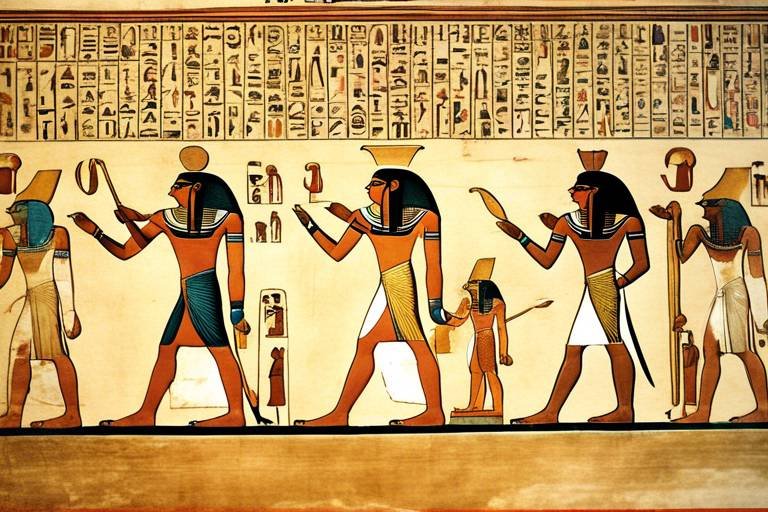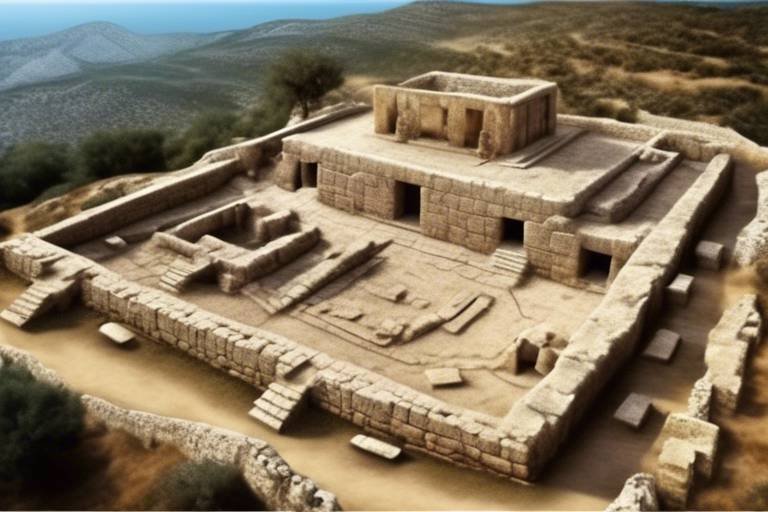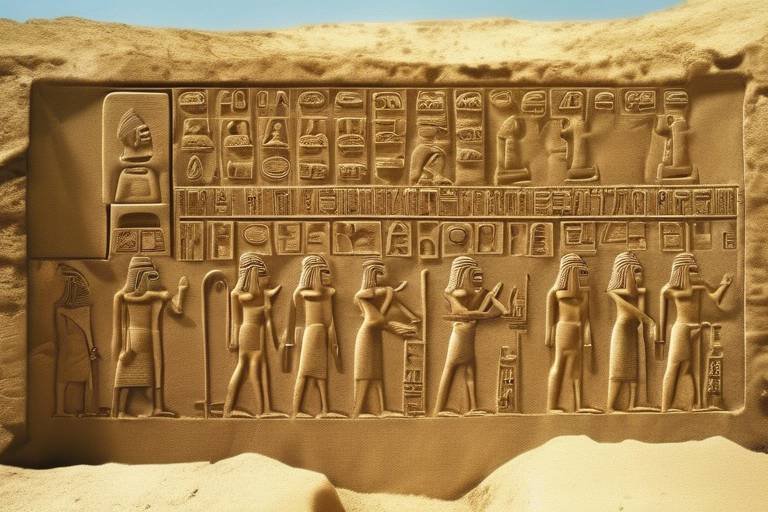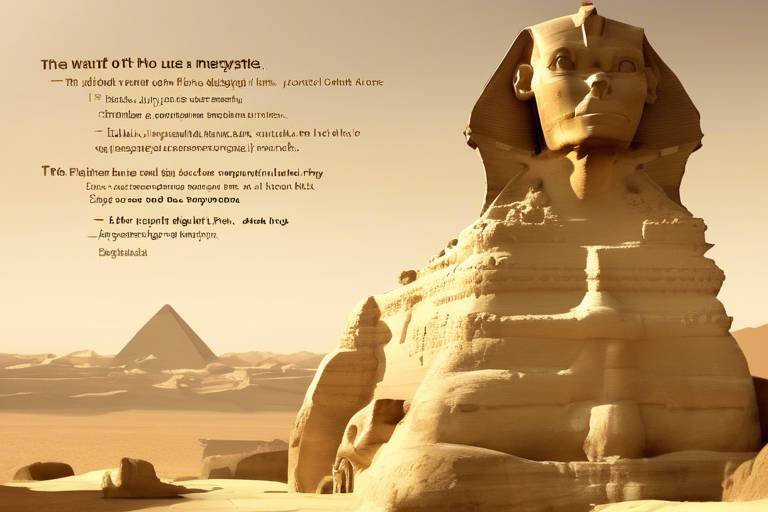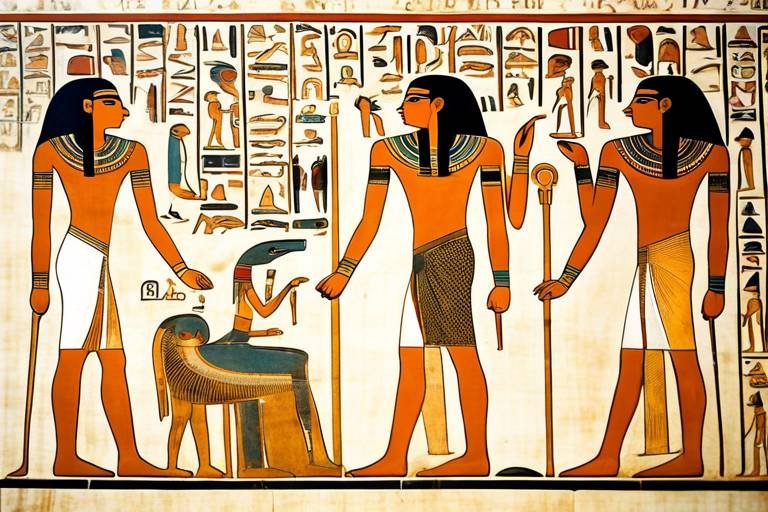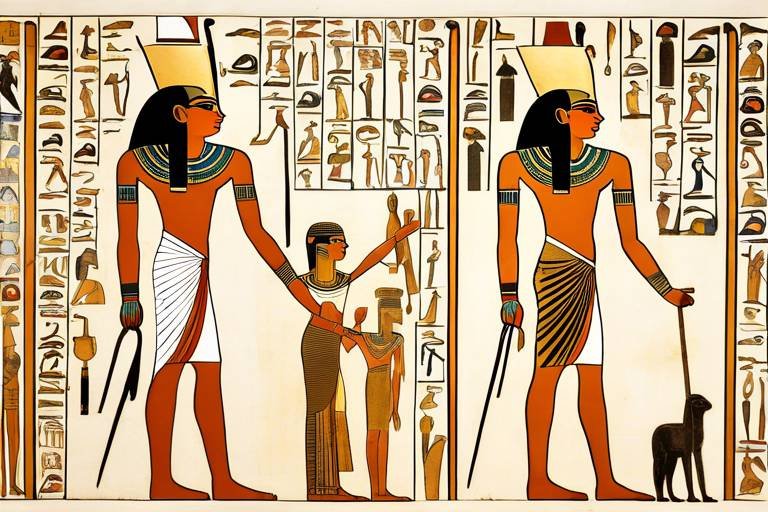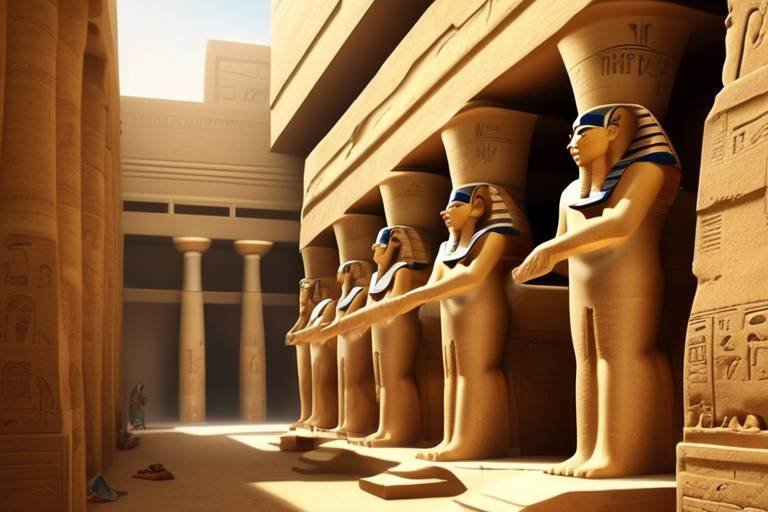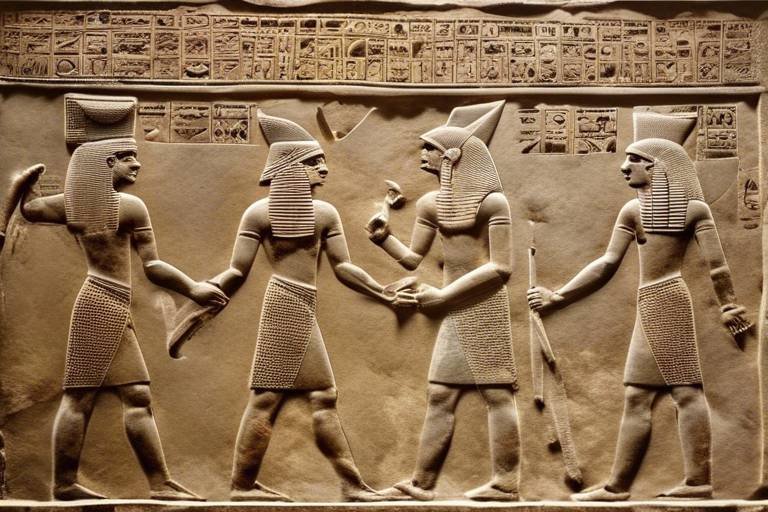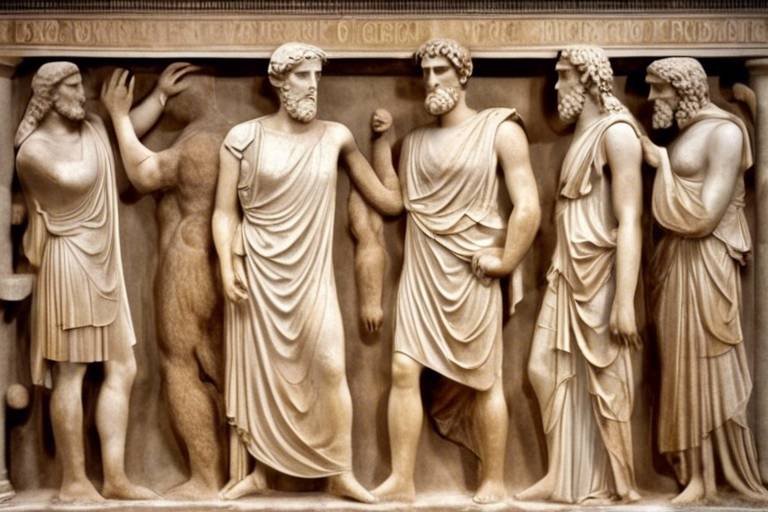The Mystery of the Ancient African Civilizations
Embark on a journey through time and unravel the enigmatic history of ancient African civilizations that have captivated the curiosity of scholars and archaeologists for centuries. These advanced societies, with their remarkable cultural achievements, continue to leave a lasting imprint on the world.
One of the most iconic symbols of ancient African civilizations is the Great Pyramids of Egypt. These architectural marvels stand as a testament to the ingenuity and skill of the ancient Egyptians, sparking debates and theories about their construction, purpose, and the mysteries shrouding their existence.
Delve deeper into the Kingdom of Kush, a powerful civilization that thrived along the Nile River. Explore the rich history of this kingdom, its influential rulers, extensive trade networks, and the profound impact it had on neighboring civilizations.
Step into the lost city of Great Zimbabwe, a once-thriving urban center adorned with intricate stone structures. Uncover the mysteries surrounding its origins, trade connections, and the ongoing debate over the factors that led to its eventual decline.
Travel to the Axum Empire in present-day Ethiopia, a flourishing civilization known for its trade routes and unique architecture. Discover the enigmatic obelisks and stelae scattered across the region, leaving behind clues to its past glory.
Trace the legacy of the Mali Empire, a realm of wealth and power under the leadership of Mansa Musa. From the bustling cities like Timbuktu to its pivotal role in trans-Saharan trade, the Mali Empire's influence reverberates through the annals of history.
Explore the maritime power and religious traditions of the Kingdom of Aksum, a civilization with a profound impact on the spread of Christianity in Africa. Unravel the mysteries surrounding the Ezana Stone and the enduring legacy of this ancient kingdom.
Uncover the history of the Carthaginian Civilization, a maritime powerhouse that clashed with Rome in epic conflicts. From its cultural achievements to the military campaigns led by Hannibal, Carthage's story is one of resilience, innovation, and enduring legacy.
Dive into the diverse Nubian kingdoms, with their pyramids, art, and intricate interactions with Egypt. Witness the cultural exchange, historical significance, and resilience of these kingdoms that shaped the tapestry of ancient African civilizations.

The Great Pyramids of Egypt
Exploring the enigmatic history, advanced societies, and cultural achievements of ancient African civilizations that continue to intrigue scholars and archaeologists worldwide.
Delving into the architectural marvels of the Egyptian pyramids, their construction, purpose, and the enduring mysteries surrounding these ancient structures.
The Great Pyramids of Egypt stand as a testament to the ingenuity and skill of the ancient Egyptians. These monumental structures, built as tombs for the pharaohs, continue to captivate the imagination of people around the world. The precision with which the pyramids were constructed, aligning with astronomical phenomena, has puzzled researchers for centuries.
One of the most enduring mysteries is how the massive stone blocks, some weighing several tons, were transported and assembled with such precision. Theories abound, from ramps to advanced engineering techniques, but the exact methods remain a subject of debate among archaeologists.
Moreover, the purpose behind the intricate design and alignment of the pyramids with the stars raises questions about the ancient Egyptians' astronomical knowledge and religious beliefs. Were the pyramids built as a pathway to the afterlife or to honor the pharaohs as divine rulers?
Despite centuries of study, the Great Pyramids of Egypt continue to reveal new secrets and spark curiosity about the lives and beliefs of the ancient Egyptians who built these remarkable structures.

The Kingdom of Kush
The Kingdom of Kush, located in present-day Sudan, was a powerful ancient African civilization that flourished alongside Egypt. Known for its wealth in natural resources such as gold, ivory, and ebony, Kush was a major player in the trans-Saharan trade routes that connected North Africa with sub-Saharan regions. The Kushite rulers, often referred to as "pharaohs," established a prosperous kingdom with a unique blend of Egyptian and indigenous African cultural elements.
One of the most fascinating aspects of the Kingdom of Kush was its relationship with Egypt. Over time, Kushite rulers even conquered and ruled Egypt as the 25th Dynasty, known as the Kushite or Nubian Dynasty. This period marked a significant cultural exchange between the two civilizations, influencing art, architecture, and religious practices in both regions.
The city of Meroe served as the capital of Kush and was renowned for its iron production, which played a crucial role in the kingdom's military strength and economic prosperity. The Meroitic script, a unique writing system used by the Kushites, remains a subject of study and mystery for scholars today.
Moreover, the Kingdom of Kush was home to impressive pyramids, similar to those found in Egypt but with distinct architectural features. These pyramids served as royal burial sites for Kushite kings and queens, reflecting the civilization's advanced craftsmanship and religious beliefs.
Despite its eventual decline due to various factors such as environmental changes and invasions, the legacy of the Kingdom of Kush continues to captivate historians and archaeologists, shedding light on the complexities of ancient African civilizations and their enduring impact on the region's history.

The Lost City of Great Zimbabwe
The Lost City of Great Zimbabwe stands as a testament to the ingenuity and architectural prowess of ancient African civilizations. Located in present-day Zimbabwe, this once-thriving city is shrouded in mystery, with its intricate stone structures and expansive layout sparking debates among historians and archaeologists.
The city's most iconic feature is the Great Enclosure, a massive stone wall that encircles a complex of structures believed to have served both practical and symbolic purposes. The impressive stone walls, some reaching up to 36 feet in height, showcase the advanced masonry skills of the inhabitants of Great Zimbabwe.
One of the enduring enigmas surrounding Great Zimbabwe is the question of its origins and decline. While some theories suggest that the city was built by a mysterious civilization, others point to the indigenous Shona people as the creators of this remarkable urban center. The reasons behind the eventual abandonment of Great Zimbabwe continue to be a topic of scholarly debate, adding to the mystique of this ancient site.
Archaeological excavations have revealed evidence of a sophisticated society that engaged in long-distance trade, exchanging goods such as gold, ivory, and pottery with distant civilizations. The presence of artifacts from as far away as China and Persia underscores the extensive trade networks that once connected Great Zimbabwe to the wider world.
Visitors to Great Zimbabwe can marvel at the intricate stonework of the city's structures, including the iconic conical tower that has become a symbol of Zimbabwean heritage. The site's cultural significance and historical importance continue to attract curious travelers and researchers eager to unravel the mysteries of this ancient African civilization.

The Axum Empire
Exploring the enigmatic history, advanced societies, and cultural achievements of ancient African civilizations that continue to intrigue scholars and archaeologists worldwide.
The Axum Empire, situated in present-day Ethiopia, stands as a testament to the grandeur of ancient African civilizations. Flourishing between the 1st and 7th centuries AD, Axum was a powerhouse known for its trade networks, unique architecture, and enigmatic obelisks and stelae scattered across the region.
One of the most intriguing features of the Axum Empire is the **obelisks** and **stelae** that dot the landscape. These towering stone monuments, some reaching over 100 feet in height, served various purposes, from marking royal graves to symbolizing the power and wealth of the empire. The **obelisks** of Axum, intricately carved and weighing several tons, continue to puzzle historians and archaeologists with their precise craftsmanship and the mystery surrounding their transportation and erection.
The **flourishing trade routes** of the Axum Empire extended across the Red Sea to the Arabian Peninsula, India, and even the Roman Empire. This extensive trade network brought wealth and diverse cultural influences to Axum, shaping its society and economy. The port city of Adulis served as a vital hub for maritime trade, connecting Axum to the lucrative markets of the ancient world.
Another enigma that captivates scholars is the **Ezana Stone**, a monumental granite slab inscribed with Ge'ez script detailing the conquests and achievements of King Ezana. This ancient artifact provides valuable insights into the history and religious traditions of the Axumite civilization, shedding light on its rulers, military campaigns, and the spread of Christianity in the region.
The architecture of Axum also reflects its grandeur and sophistication. The **palace ruins**, **royal tombs**, and **stone structures** in the capital city showcase the empire's architectural prowess and cultural achievements. The **Dungur Palace**, believed to be the residence of the Queen of Sheba, and the **Tomb of the False Door**, a monumental burial site, are among the notable archaeological sites that offer a glimpse into the opulence and power of the Axumite rulers.
In conclusion, the Axum Empire remains a captivating chapter in the history of ancient Africa, characterized by its thriving trade networks, monumental architecture, and enigmatic artifacts. The legacy of Axum continues to inspire curiosity and admiration, inviting us to delve deeper into the mysteries of this remarkable civilization.
Q: What was the significance of the obelisks and stelae in the Axum Empire?
A: The obelisks and stelae served various purposes, from marking royal graves to symbolizing the power and wealth of the empire. They are a testament to the architectural and artistic achievements of the Axumites.
Q: How did the trade networks of the Axum Empire contribute to its prosperity?
A: The extensive trade routes of Axum connected the empire to lucrative markets across the ancient world, bringing wealth, cultural exchange, and influence to the region.
Q: What role did the Ezana Stone play in the history of the Axum Empire?
A: The Ezana Stone, inscribed with Ge'ez script, provides valuable insights into the conquests, achievements, and religious traditions of the Axumite rulers, particularly King Ezana.
Q: What are some of the notable architectural achievements of the Axum Empire?
A: The palace ruins, royal tombs, and stone structures in Axum reflect the empire's architectural prowess. Sites like the Dungur Palace and the Tomb of the False Door showcase the grandeur and sophistication of Axumite architecture.
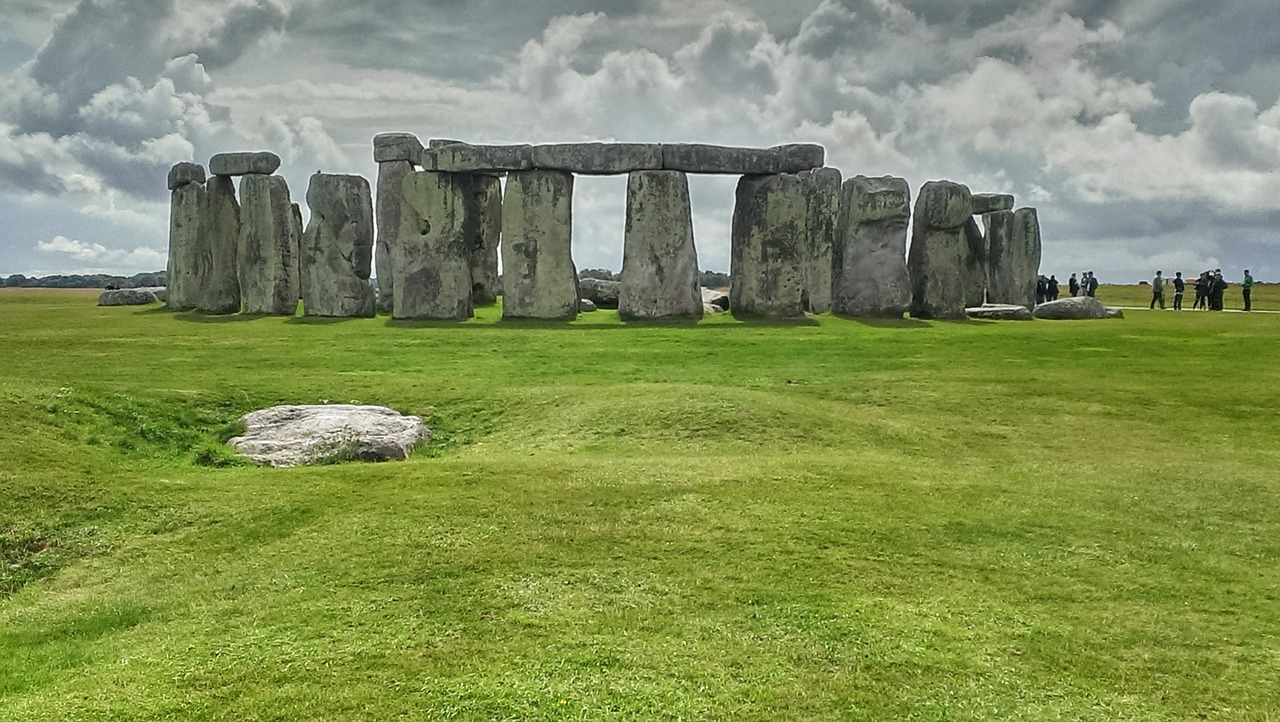
The Mali Empire
Exploring the enigmatic history, advanced societies, and cultural achievements of ancient African civilizations that continue to intrigue scholars and archaeologists worldwide.
Delving into the architectural marvels of the Egyptian pyramids, their construction, purpose, and the enduring mysteries surrounding these ancient structures.
Unraveling the rich history and cultural significance of the Kingdom of Kush, its powerful rulers, trade networks, and influence on neighboring civilizations.
Investigating the ruins of Great Zimbabwe, a once-thriving city with intricate stone structures, trade connections, and the enduring debate over its origins and decline.
Exploring the rise of the Axum Empire in present-day Ethiopia, its flourishing trade routes, unique architecture, and the mystery of the obelisks and stelae scattered across the region.
Tracing the legacy of the Mali Empire, renowned for its wealth, leadership under Mansa Musa, thriving cities like Timbuktu, and its pivotal role in trans-Saharan trade.
Examining the Kingdom of Aksum's maritime power, religious traditions, the enigma of the Ezana Stone, and its influence on the spread of Christianity in Africa.
Uncovering the history of Carthage, its maritime prowess, conflicts with Rome, cultural achievements, and the enduring legacy of Hannibal's military campaigns.
Diving into the diverse Nubian kingdoms, their pyramids, art, and interactions with Egypt, exploring their resilience, cultural exchange, and historical significance in Africa.
The Mali Empire, a beacon of wealth and power in West Africa, stands as a testament to the grandeur of ancient African civilizations. Led by the legendary Mansa Musa, the empire thrived on the riches of the trans-Saharan trade routes, fostering a vibrant cultural scene in cities like Timbuktu.
The empire's influence extended far beyond its borders, attracting scholars, traders, and artists from distant lands. Mansa Musa's legendary pilgrimage to Mecca, accompanied by a lavish caravan, showcased the immense wealth and splendor of Mali to the world.
The Mali Empire's cultural achievements, including impressive architecture, intricate artwork, and a thriving intellectual community, left a lasting legacy that continues to inspire admiration and curiosity among historians and archaeologists.
Exploring the remnants of this once-mighty empire offers a glimpse into a bygone era of prosperity and influence, where the sands of the Sahara whispered tales of wealth and power that resonated across continents.

The Kingdom of Aksum
The Kingdom of Aksum, located in present-day Ethiopia, was a dominant maritime power in the ancient world. Renowned for its strategic location along major trade routes, Aksum flourished as a center of commerce and culture. The enigmatic Ezana Stone, inscribed with Ge'ez script detailing the kingdom's conversion to Christianity, stands as a testament to Aksum's religious traditions and historical significance. This stone, shrouded in mystery, continues to intrigue scholars and archaeologists alike, offering insights into Aksum's influence on the spread of Christianity in Africa.
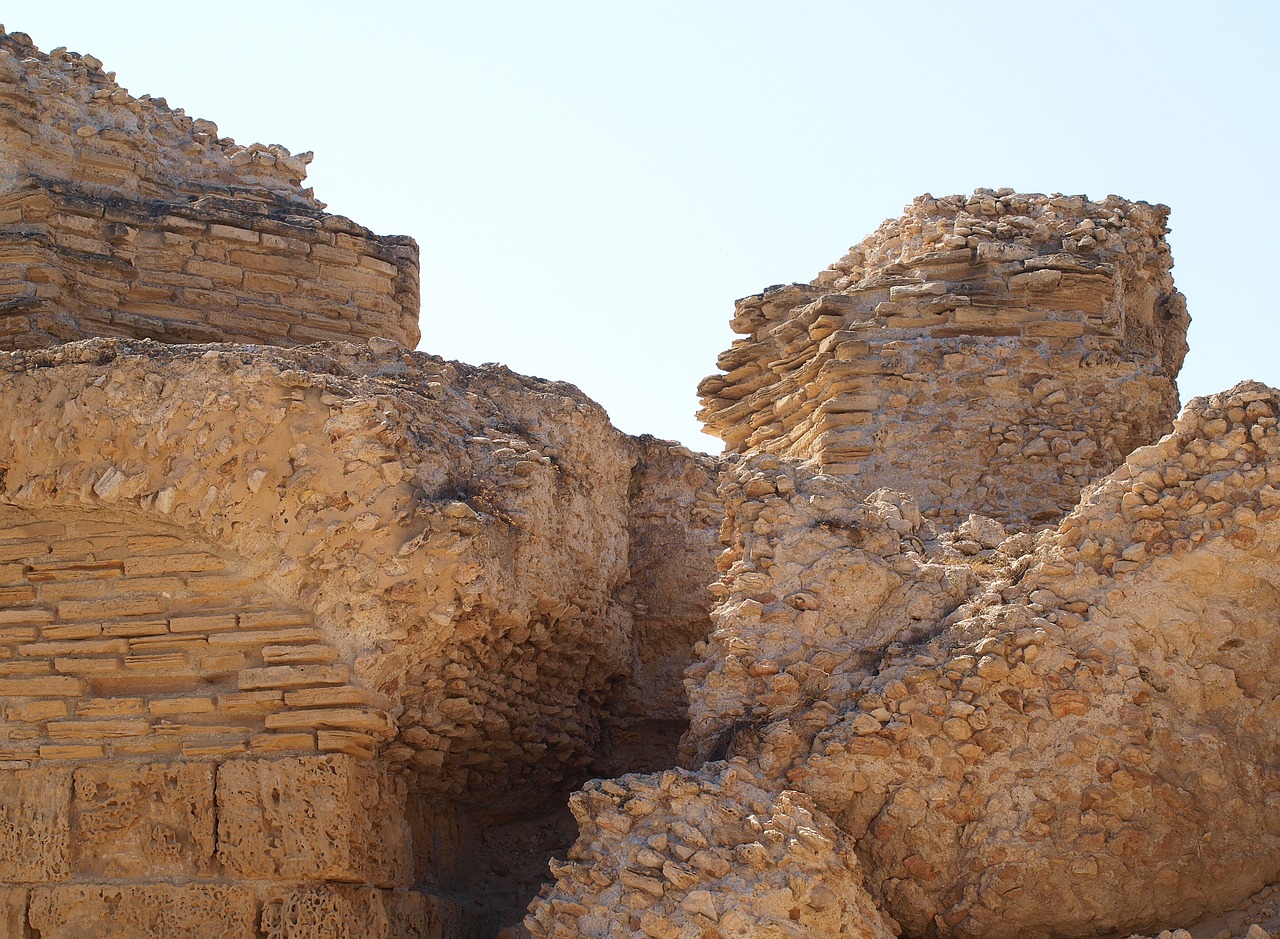
The Carthaginian Civilization
The Carthaginian Civilization was a powerful ancient civilization located in North Africa, known for its maritime prowess and strategic location. Carthage, the capital city, was a bustling hub of trade and culture, attracting merchants and travelers from far and wide. The Carthaginians were skilled sailors and established a vast trading network across the Mediterranean, influencing the region's economy and politics.
One of the most famous figures in Carthaginian history is Hannibal, a brilliant military strategist who led daring campaigns against Rome. His crossing of the Alps with war elephants is still studied today as a remarkable military feat. The conflicts between Carthage and Rome, particularly the Punic Wars, shaped the course of ancient history and left a lasting impact on both civilizations.
Carthage was not only a center of commerce but also a hub of culture and learning. The city was adorned with impressive architecture, temples, and theaters, showcasing the artistic and architectural achievements of the Carthaginian people. Their cultural legacy influenced later civilizations in the region and beyond.
Despite its eventual defeat by Rome, the Carthaginian Civilization left a lasting legacy that continues to captivate historians and archaeologists. The remnants of Carthaginian culture can still be found in archaeological sites across North Africa, offering glimpses into a sophisticated and dynamic ancient society.
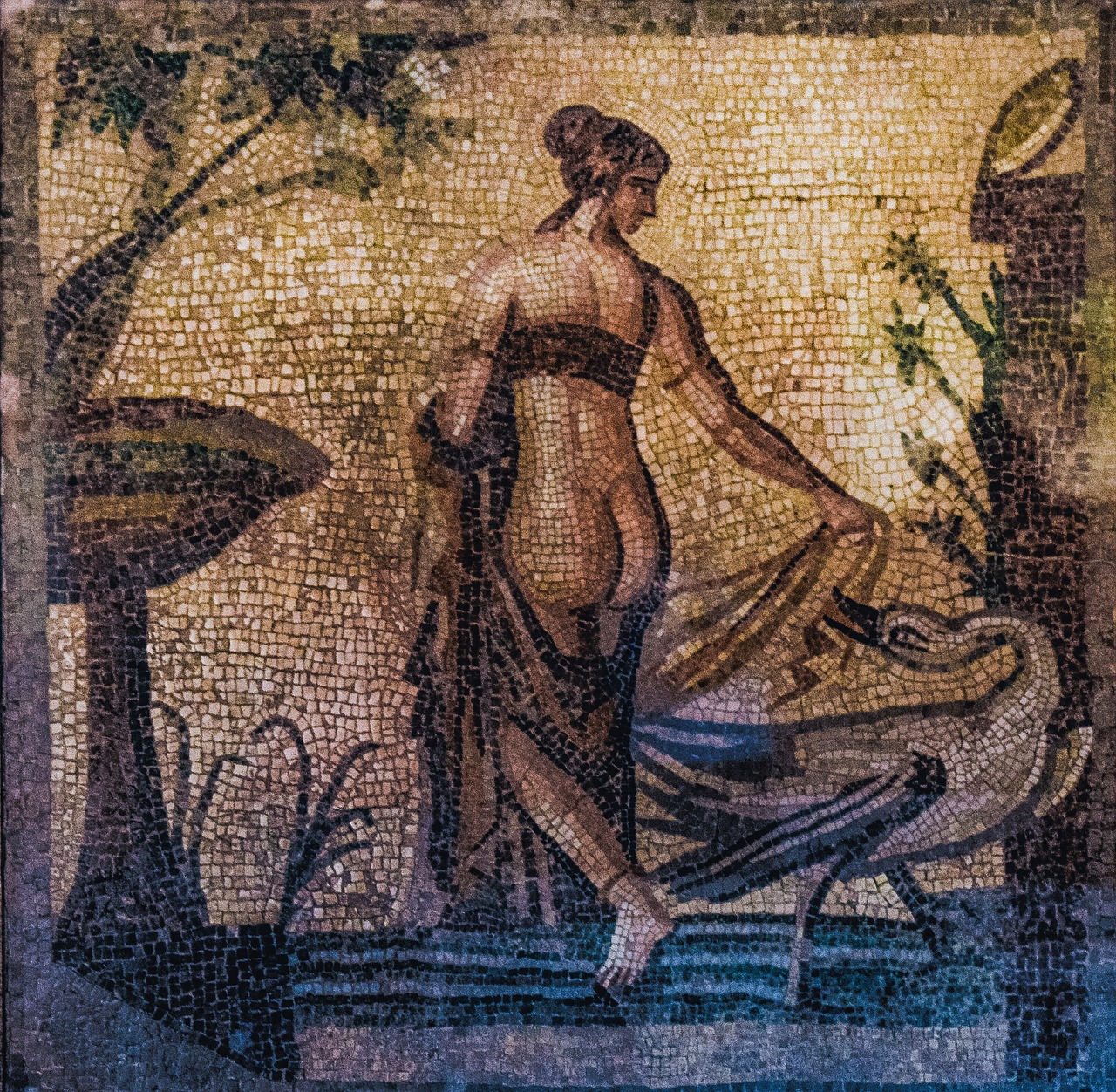
The Nubian Kingdoms
The Nubian Kingdoms, located in present-day Sudan and southern Egypt, were a collection of powerful states that thrived along the Nile River. These kingdoms, such as the Kingdom of Kush and the Kingdom of Meroe, were known for their impressive pyramids, vibrant art, and strong connections with ancient Egypt. The Nubians were skilled warriors and traders, establishing trade routes that spanned across the African continent and beyond.
One of the most fascinating aspects of the Nubian Kingdoms was their unique blend of cultures, influenced by interactions with Egypt, Greece, and other civilizations. This cultural exchange enriched their art, architecture, and religious practices, creating a distinct Nubian identity that is still evident in the archaeological remains found in the region.
The Nubian pyramids, particularly those in Meroe, stand as a testament to the advanced engineering and architectural skills of the Nubian people. These steep-sided structures, often accompanied by rich burial goods, reflect the wealth and power of the Nubian rulers. The Nubians also excelled in pottery making, jewelry crafting, and mural paintings, showcasing their artistic prowess.
Despite facing challenges from neighboring empires and undergoing periods of conquest and decline, the Nubian Kingdoms persevered and left a lasting impact on the history of Africa. Their resilience in the face of adversity and their ability to adapt to changing political landscapes demonstrate the strength and ingenuity of the Nubian civilization.
In conclusion, the Nubian Kingdoms were a dynamic and influential force in ancient Africa, shaping the cultural and political landscape of the region for centuries. Their legacy lives on in the impressive ruins, intricate artifacts, and historical records that continue to captivate historians and archaeologists to this day.
Frequently Asked Questions
- What were the main achievements of the ancient African civilizations?
The ancient African civilizations achieved remarkable feats in architecture, trade, governance, and cultural development. From the construction of the Great Pyramids of Egypt to the flourishing trade networks of the Mali Empire, these societies left a lasting impact on history.
- Why are the Egyptian pyramids considered architectural marvels?
The Egyptian pyramids are revered for their precision in construction, alignment with celestial bodies, and the sheer scale of the monuments. The mysteries surrounding their purpose, construction techniques, and the advanced knowledge of the ancient Egyptians continue to captivate researchers and visitors alike.
- What is the significance of the Kingdom of Kush?
The Kingdom of Kush played a crucial role in the trade networks of ancient Africa, exerting influence over neighboring civilizations and showcasing a rich cultural heritage. Its powerful rulers, such as the Nubian pharaohs, left behind a legacy of artistic achievements and architectural wonders.
- Why is the Lost City of Great Zimbabwe a topic of debate?
The ruins of Great Zimbabwe present a mystery surrounding the origins and decline of this once-thriving city. The intricate stone structures, trade connections with distant regions, and the enigmatic culture of its inhabitants continue to fuel scholarly discussions and speculations.
- What sets the Axum Empire apart in African history?
The Axum Empire, known for its maritime power, unique architecture, and religious significance, stands out as a key player in the ancient African world. The obelisks and stelae scattered across the region serve as a testament to its grandeur and influence.


